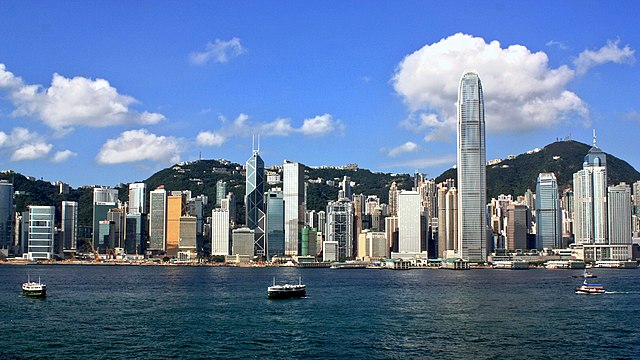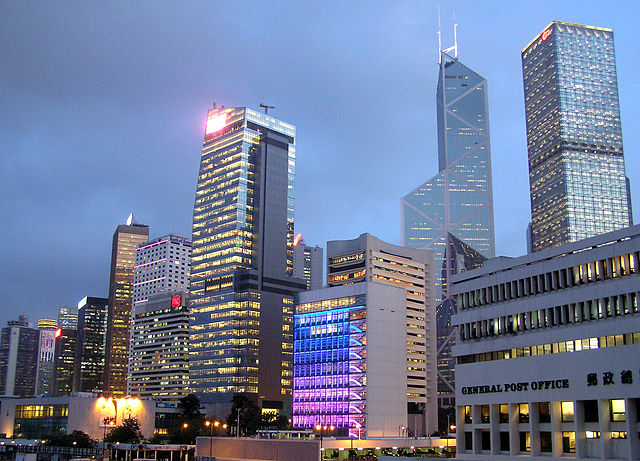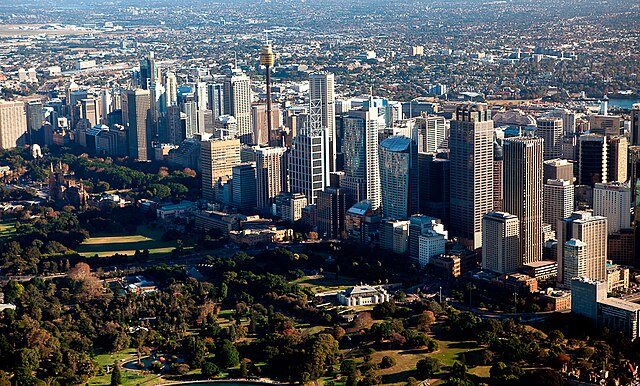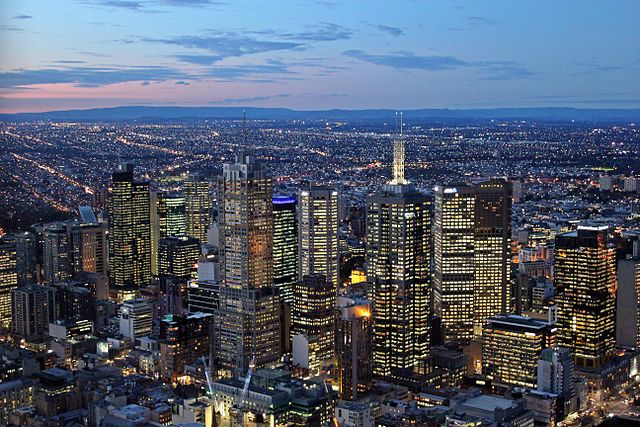Central is the central business district of Hong Kong. It is located in the northeastern corner of the Central and Western District, on the north shore of Hong Kong Island, across Victoria Harbour from Tsim Sha Tsui, the southernmost point of Kowloon Peninsula. The area was the heart of Victoria City, although that name is rarely used today.
Central as viewed from Tsim Sha Tsui, on the opposite side of Victoria Harbour
View of Central and Victoria Harbour from Victoria Peak. Tsim Sha Tsui is visible across the harbour.
Admiralty, Central and the Central and Wan Chai Reclamation, view from the east in 2010.
The General Post Office, the City Hall, and the surrounding business buildings in Central, viewed from the west.
Central business district
A central business district (CBD) is the commercial and business center of a city. It contains commercial space and offices, and in larger cities will often be described as a financial district. Geographically, it often coincides with the "city center" or "downtown". However, these concepts are not necessarily synonymous: many cities have a central business district located away from its commercial and/or cultural center and/or downtown/city center, and there may be multiple CBDs within a single urban area. The CBD will often be highly accessible and have a large variety and concentration of specialized goods and services compared to other parts of the city.
Midtown Manhattan, the largest central business district in the United States
Sydney central business district
Melbourne central business district
Brisbane central business district








